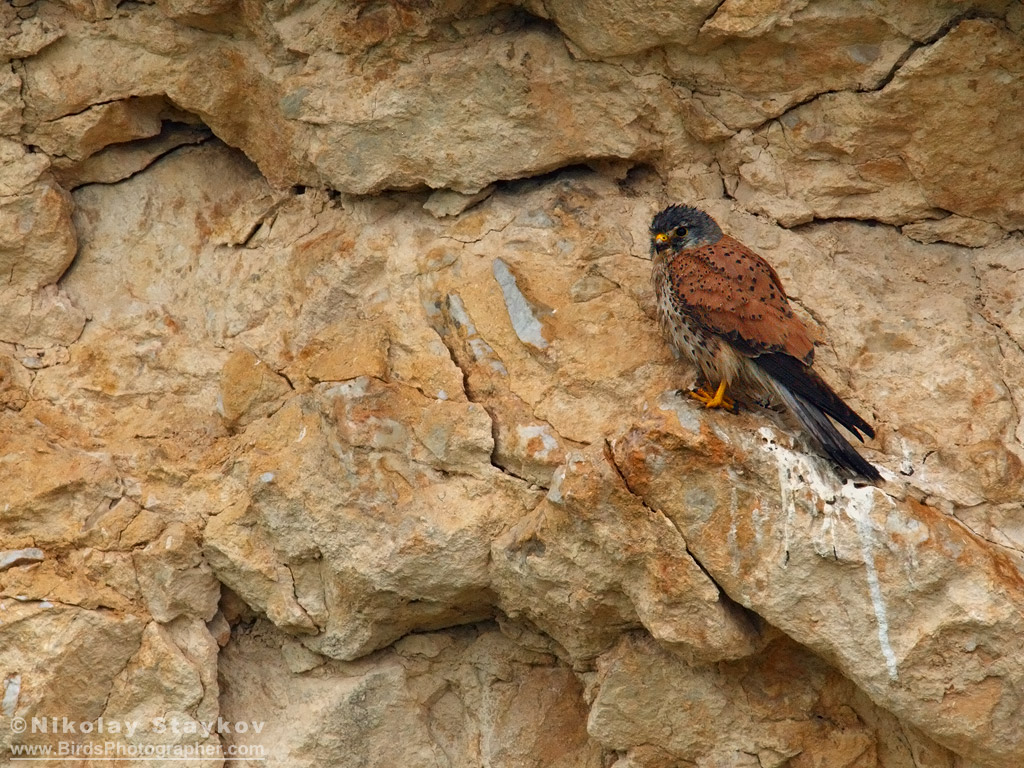Common kestrel (Falco tinnunculus)
More images of the kestrel »
The photo is very interesting due to the way it is shot. For the purpose, I used stacked teleconverters – Canon 7D, 400/2.8 lens and 2x II and 1.4 II teleconverters. I chose the widest possible aperture for this combination – f/8 at the lowest speed of 1/200 sec. To make things more interesting, the lens was propped against the thin glass of the car window, and shooting was done with LV AF (Live View Auto Focus). The weather was very overcast, so I had to up the “film” sensitivity to ISO 1000.
At these parameters, the lens becomes 1120mm, and when we apply the 1.6x magnification (Canon 7D has 1.6x crop factor), the effective focal length is 1800mm. The bird was at a distance of over 30 meters. I have made similar experiments before, and I have found that, if the bird is far and doesn’t fill up the frame, it is better to use the two teleconverters stacked, rather than “just” 2xII. Even at 100%, the stacked teleconverters still look better than when using the double teleconverter alone. I have no explanation why this is happening. If we judge by the EXIF information, the presence of the 1.4xII teleconverter would appear to not be taken into consideration with the lens and teleconverter system.
And lastly, this is not the entire frame, but an approx. 40% crop. It would be interesting for me to make a similar experiment with a tripod and sufficient light. I’m sure that, if the frame is filled up, the resulting quality will be much better.











Write a comment